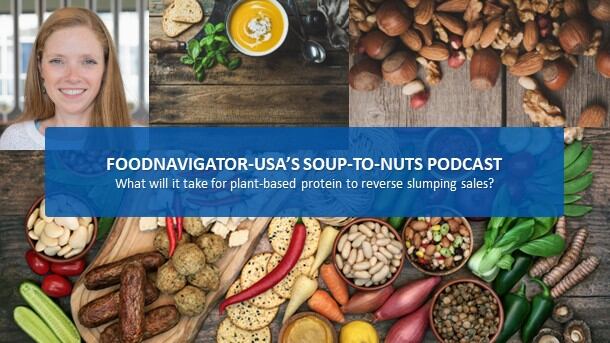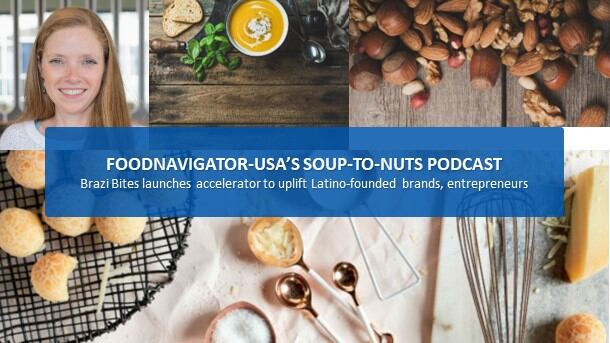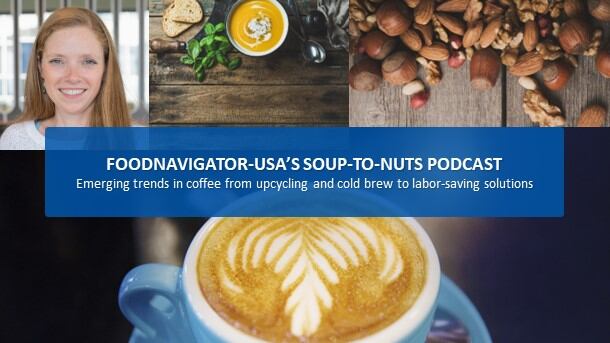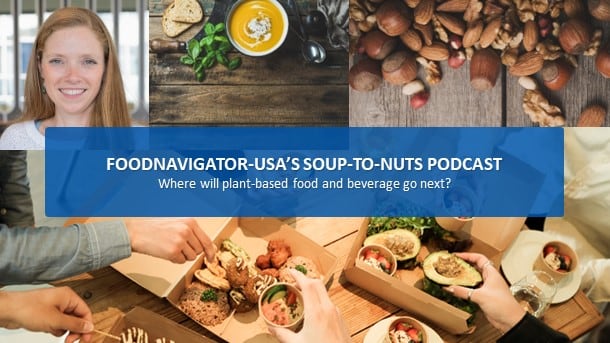In the four weeks ending Aug. 28, dollars sales of fresh and frozen plant-based meat alternatives dipped 0.9% to $92m, unit sales fell 7.2% to 17m and volume sales measured in pounds fell 4.2% to 12m compared with the same period last year. And while unit and volume have fallen consistently each month this year, this is only the second time that sales have dropped in the same period with the other occurring in May.
The downward decline is uneven across plant-based meat, mainly concentrated in refrigerated products, for which volume sales fell 16.7% in August and 10% over the past year and dollar sales fell 16.2% for the month and 9.5% in the year. The drop in August sales came even with a 0.6% lift in price per pound and a 0.1% increase in price per unit.
And yet, Fazeela Abdul Rashid, a partner at the venture capital fund Revolution Growth, says she still sees great promise in the plant-based meat segment, which she described as still being in early days.
In this episode of FoodNavigator-USA’s Soup-To-Nuts Podcast, Abdul Rashid shares where she sees the most potential for alternative proteins and how the industry must evolve to seize those opportunities and overcome the current challenges that are contributing to its backwards slide. She also shares tips for creating a sustainable business model to deliver on the multifaceted needs of consumers, the planet and investors even in a period of economic uncertainty and constant flux.
[Editor’s note: Never miss an episode of FoodNavigator-USA’s Soup-To-Nuts podcast – subscribe today.]
Investing strategically in alternative protein
As one of the newest members of Revolution Growth’s team, Abdul Rashid said she was drawn to the growth fund’s mission to deploy capital outside of the main tech hubs and because it values collaboration – two elements she says are essential to the turnaround and long-term growth of the still nascent alternative protein space because they foster diversity and accountability.
She also noted that because the fund invests $10-40m in businesses on the “cusp of commercialization” it is helping businesses, including those in the alternative protein space, overcome common roadblocks, like technology risks, commercialization and execution. Plus, as a DC-based organization, it can help companies understand and influence regulations and policy.
With this toolbox, the firm is able to make educated investments and offer expertise as the alternative protein space continues to segment beyond just “plant-based” to including mycelium-based and cell-based as well as both ‘meats’ and ‘dairy.’
“We’re really at the early innings”
Abdul Rashid acknowledged that challenges and false starts inevitably accompany change at the pace experienced currently in the alt-protein space, but she says she is confident that these will be addressed in a timely fashion as the space continues to evolve.
“We’re really at the early innings, right? When you think of companies that are at scale, there are very few,” but “I think this industry will evolve so that we have a variety. I think you’ll start seeing a plant-based category, you’ll start seeing a mycelium category, you’ll eventually see an animal cell category. I think consumers will react differently to each one of these categories, but it gives people who are looking for options … something that tastes good and something that meets [their] preferences,” she said.
“I believe when people find those links and everyone is solving for different needs under the consumers’ preferences, we will start to build an industry that is much larger than it is today and create a true market in the alternative protein space,” she added.
A long checklist for success
But for this to happen, she argues, entrepreneurs and investors must rethink how they evaluate opportunities.
“If you step back and look at how the area has been funded in the last four to five years, everyone recognized from a macro-perspective that there is value in investing in alternative proteins,” but they have primarily evaluated it from technology, innovation and climate perspectives, she said.
“Only recently have you started interspersing the conversation around what actually tastes good and what does the consumer want to eat and putting that as part of the equation,” she said.
Using her meat-eating husband as an example, Abdul Rashid said if alternative protein companies are going to take away something people are familiar with and like, they need to offer something better – meaning something nutritious, delicious, made with clean ingredients and versatile.
Equally important is offering consumers’ products that they are comfortable with, which means if new IP or ingredients are used, explaining what they are – to the extent possible – to the consumer, rather than hiding that information.
“Industry has to figure out about making something uniquely, but making something that people understand and are willing to take a risk on. And it’s a tough balance,” she said. “The onus is on industry and investors to educate the consumer around all the value that this industry is creating.”
This includes explaining more clearly the environmental benefits – something consumers want but are not always highly educated about.
Again she pointed to the non-dairy category as delivering on these points. The ingredient decks of non-dairy milk are often simple – “basically oats and water or almonds and water” – and the process for making it is easy to understand. This combination has helped non-dairy milk capture about 15% of the overall dairy category.
Building a sustainable business model is key
As important as it is to create a product that consumers crave and are comfortable consuming, Abdul Rashid says alternative protein players also must create a business model that is sustainable – something that hasn’t always been true in the space.
The first step is to identify what is already offered in the market and how your finished product is different, she said. Unfortunately, she added, many companies are focused instead on how their IP or technology is different, but their end product is not significantly different from other offerings – hence the overcrowding of patties, sausages and nuggets.
Second she said the ingredients and product integrity must be top quality, but a company must also be able to keep costs down and ensure a stable supply chain.
Third, Abdul Rashid said, supportive investors who can open doors and help push in a positive direction are a key element of successful companies.
Finally, she recommends companies think about their overall portfolio and not just one product so that it is easier to expand the businesses reach and impact.
A sustainable business model also needs to take into account how much consumers are willing to spend on alternative protein compared to their animal counterparts. On this point, she argues, the current economic uncertainty and inflation may work in the favor of alternative protein producers because it is driving up the cost of animal products – making it less risky for consumers to try something new.
Meati Foods offers a framework to follow
If checking all of these boxes sounds like a tall order that is because it is – but it is also possible, argues Abdul Rashid. As an example, she pointed to the plant-based protein company Meati Foods, which makes whole food proteins from mushroom root and recently secured a $150m funding round led by Revolution and on which board Abdul Rashid sits.
“When I look at the framework around technology and innovation and having IP … around how they actually use fermentation to convert mycelium, which is in my mind a superfood, and a differentiated food and something that can mimic the texture of meat and actually tastes good” there is a lot of potential for retailer and consumer excitement and engagement, she said.
Add on to that how Meati’s products have clean ingredient decks, are versatile and easily understood by consumers, the company wins and the industry wins, she said, noting this is the a model for success that can and should be replicated by others entering the space.




